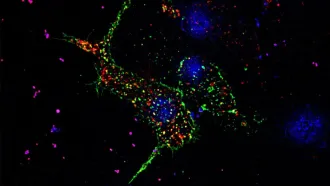
In a recent study, researchers from Christ (Deemed to be University), Bengaluru, have developed a technique to make fluorescent carbon nanoparticles using lignite, a type of coal that is available ubiquitously. These nanoparticles have the potential to be developed as glucose sensors to detect hypoglycemia or decreased glucose levels.The results of the study have been published in the journal Scientific Reports.
When lignite is formed, it has many nanocarbon crystals. One could harness these carbon nanoparticles and control their size using chemical methods like oxidation, by the use of sound energy and through centrifugation techniques. These nanoparticles can also be made fluorescent by controlled oxidation and reduction in the particle size.
Most glucose sensors available today use enzyme-based approaches to measure glucose levels. On the contrary, nanocarbon sensors are much cheaper and more robust. “Fluorescence-based sensors have advantages of better sensitivity, short response time, low detection limit, making them better sensors for detecting hypoglycemia”, say the authors talking about the advantage of designing a fluorescence-based nanosensor. However, producing carbon nanostructures with currently available techniques is time-consuming and expensive.
In this study, the researchers use sound energy to extract carbon dots and graphene quantum dots from lignite powder in the presence of nitric acid and then stir the mixture. The nanocarbon, thus obtained, contains functional groups like epoxy, hydroxyl and carbonyl functional groups. Due to the presence of these oxygen-functional groups, they are highly soluble in water. These functional groups act as an active site for the glucose molecules, which have a significant effect on the photoluminescence property of the carbon dots.
“To the best of our knowledge, this is the first reported study on glucose detection with the aid of lignite-based nanocarbon”, say the authors about this novel approach.
The sensitivity of the nanocarbon structured obtained by the new approach is so high that it can detect meagre quantities of glucose (about 0.125 mM) present in a solution, making it apt for detecting hypoglycemia. “This finding could lead to the development of a low-cost glucose sensor using low-grade coal as a precursor”, say the authors.
With the growing threat of the diabetes epidemic, new cost-effective and efficient ways to detect variations in glucose levels can help many people affected by the disease. This study could help in the design of one such sensor.
“Our findings establish a scalable method for the production of a fluorescent carbon-based glucose sensor from lignite”, conclude the authors.






